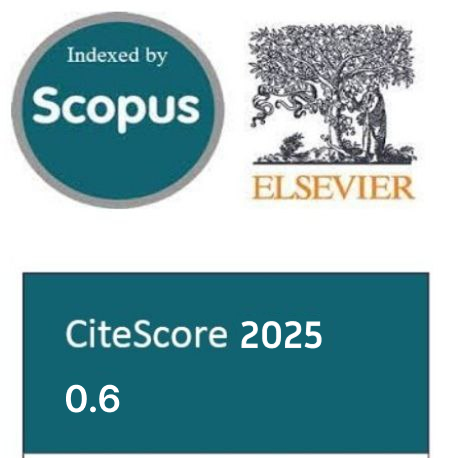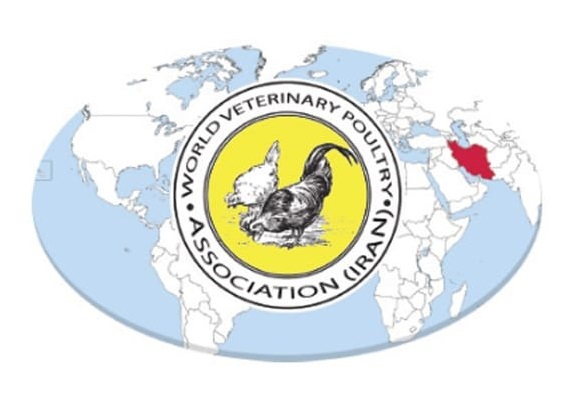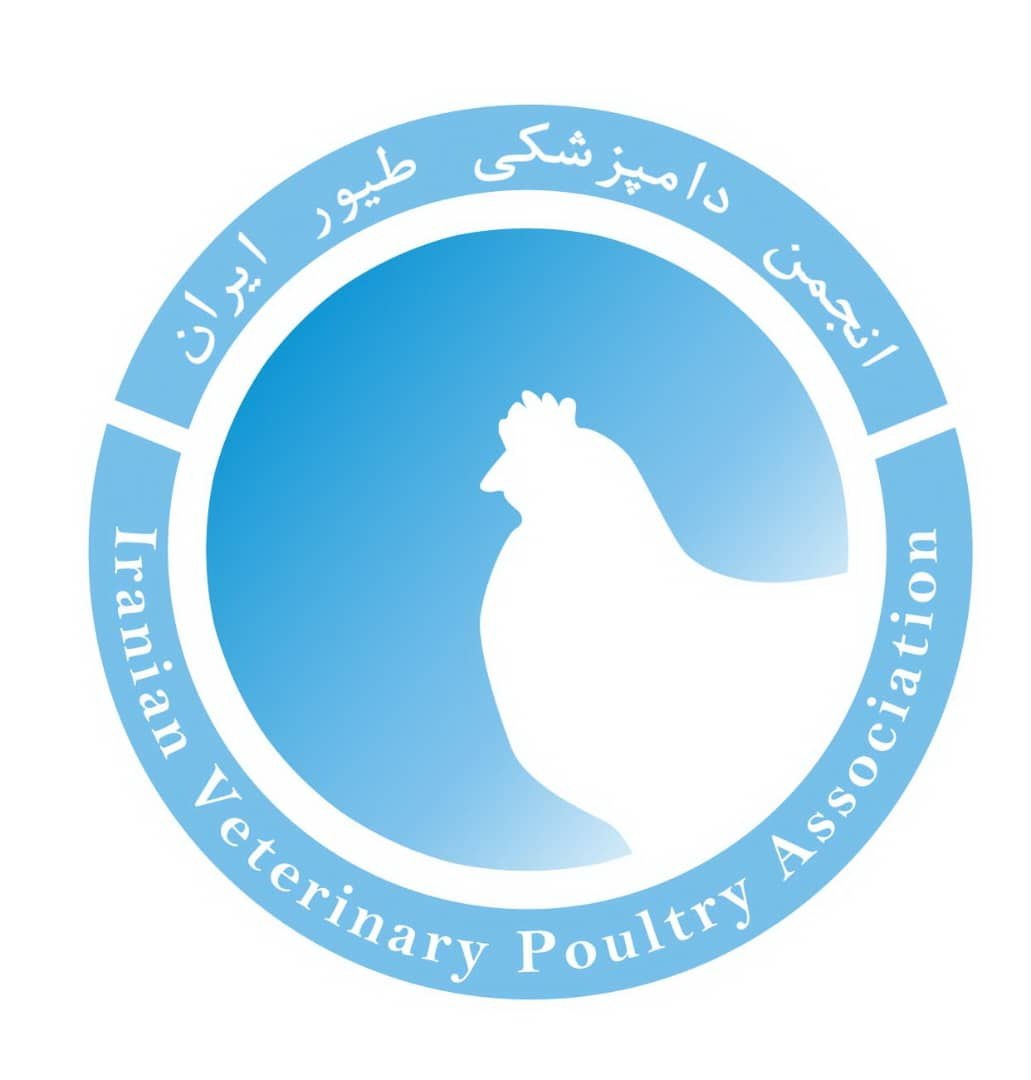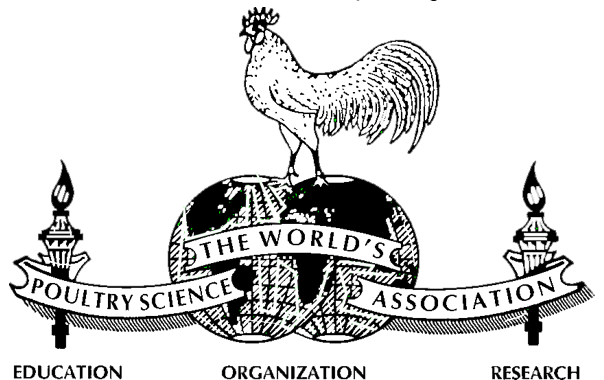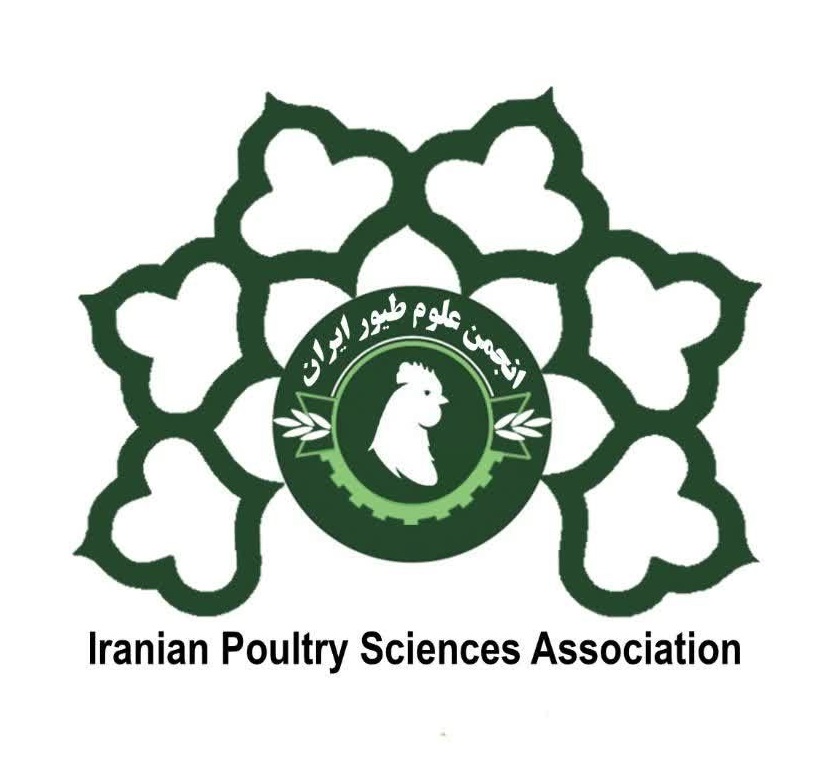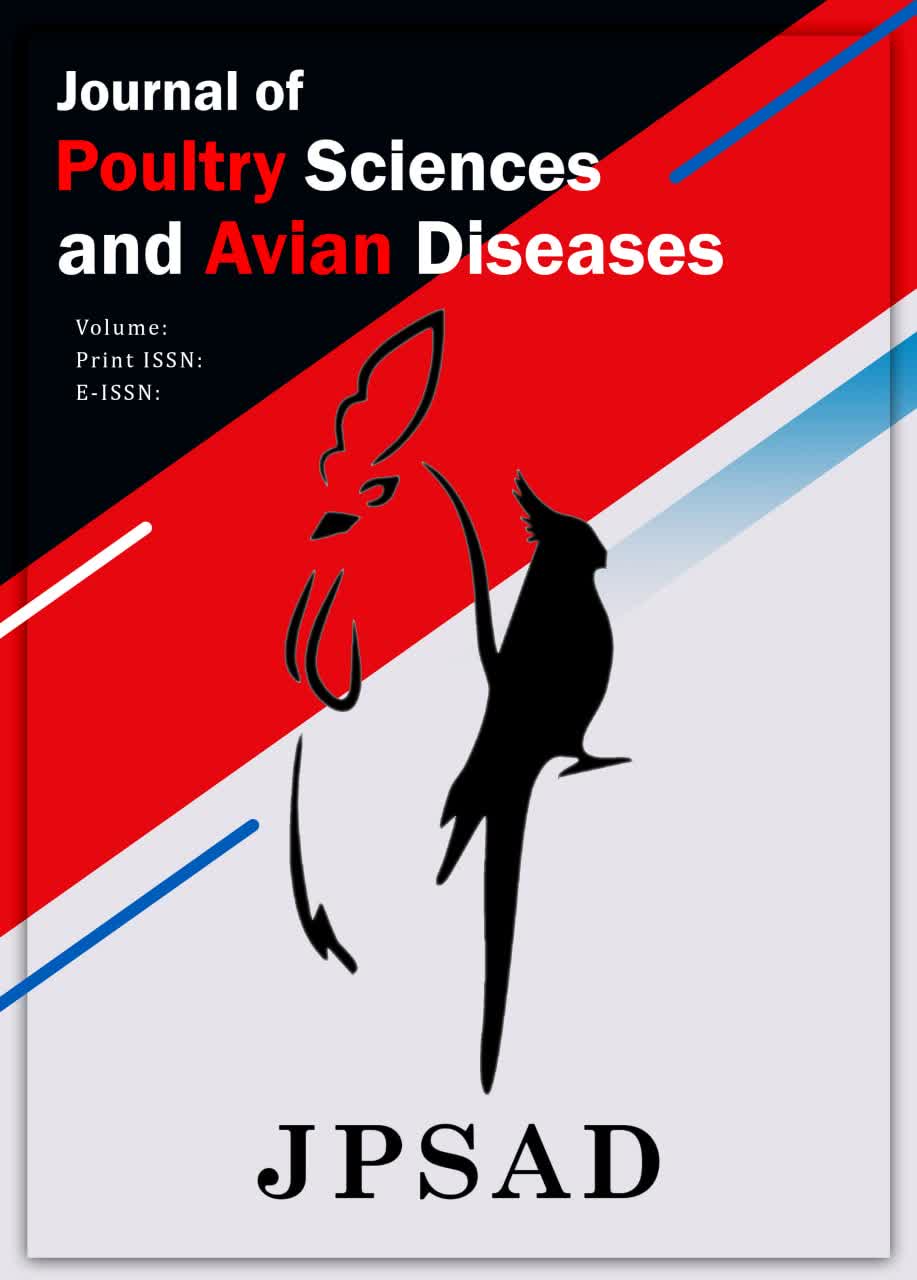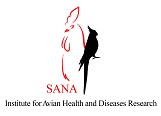Application of Artificial Intelligence in the Prevention and Diagnosis of Avian Influenza: A Literature Review
Keywords:
Avian Influenza, Machine Learning, Artificial Intelligence, PoultryAbstract
Avian Influenza is an important zoonotic viral disease affecting poultry and wild birds. Current prevention and control strategies are often ineffective, leading to significant economic losses and public health risks. This review highlights the role of Artificial Intelligence (AI) and Machine Learning (ML) in enhancing surveillance, early detection, and prediction of avian influenza infections in poultry. Various AI and ML techniques, including Gradient-boosted trees, Convolutional Neural Networks, and Sensor-Based Detection methods, have been applied to classify the pathogenicity of avian influenza virus strains, identify sick and deceased birds, and predict the likelihood of isolating avian influenza viruses in wild bird samples. These innovative solutions can offer high accuracy and efficiency in disease detection, reducing production expenses and enhancing animal welfare. Integrating AI and ML in poultry farming can improve disease management strategies, reduce zoonotic transmission risks, and safeguard global food security. This review provides insights into the current state of AI and ML applications in avian influenza detection and surveillance, highlighting their potential to transform the poultry industry toward a more efficient, sustainable, and healthier future.
Downloads
References
McMullin PF. Diseases of poultry 14th edition: David E. Swayne, Martine Boulianne, Catherine M. Logue, Larry R. McDougald, Venugopal Nair, David L. Suarez, Sjaak de Wit, Tom Grimes, Deirdre Johnson, Michelle Kromm, Teguh Yodiantara Prajitno, Ian Rubinoff & Guillermo Zavala (Eds.), Hoboken, NJ, John Wiley & Sons, 2020, 1451 pp.,£ 190 (hardcover)/£ 171.99 (e-book), ISBN 9781119371168. 2020. [DOI]
Swayne DE. Epidemiology of avian influenza in agricultural and other man‐made systems. Avian influenza. 2008:59-85. [PMID: 23689886] [DOI]
Alexander DJ. An overview of the epidemiology of avian influenza. Vaccine. 2007;25(30):5637-44. [PMID: 17126960] [DOI]
Schäfer W. Vergleichende sero-immunologische Untersuchungen über die Viren der Influenza und klassischen Geflügelpest. Zeitschrift für Naturforschung B. 1955;10(2):81-91. [DOI]
King AM, Lefkowitz E, Adams MJ, Carstens EB. Virus taxonomy: ninth report of the International Committee on Taxonomy of Viruses: Elsevier; 2011.
Shaw M, Palese P. Orthomyxoviridae. Fields virology. 2013;1:1151-85.
Swayne DE, Spackman E. Current status and future needs in diagnostics and vaccines for high pathogenicity avian influenza. Dev Biol (Basel). 2013;135:79-94. [DOI]
Lee D-H, Bertran K, Kwon J-H, Swayne DE. Evolution, global spread, and pathogenicity of highly pathogenic avian influenza H5Nx clade 2.3. 4.4. Journal of veterinary science. 2017;18(S1):269-80. [PMID: 28859267] [PMCID: PMC5583414] [DOI]
Garcia M, Suarez D, Crawford J, Latimer J, Slemons R, Swayne D, et al. Evolution of H5 subtype avian influenza A viruses in North America. Virus research. 1997;51(2):115-24. [PMID: 9498610] [DOI]
Dolin R, Reichman RC, Madore HP, Maynard R, Linton PN, Webber-Jones J. A controlled trial of amantadine and rimantadine in the prophylaxis of influenza A infection. New England Journal of Medicine. 1982;307(10):580-4. [PMID: 7050702] [DOI]
Beard C, Brugh M, Johnson D. Laboratory studies with the Pennsylvania avian influenza viruses (H5N2). 1984.
Webster R, Kawaoka Y, Bean W, Beard C, Brugh M. Chemotherapy and vaccination: a possible strategy for the control of highly virulent influenza virus. Journal of virology. 1985;55(1):173-6. [PMID: 4009792] [PMCID: PMC254912] [DOI]
Halvorson D, Karunakaran D, Abraham A, Newman J, Sivanandan V, Poss P. Efficacy of vaccine in the control of avian influenza. Avian Diseases. 2003;47:264-70.
Singh M, Kumar R, Tandon D, Sood P, Sharma M. Artificial intelligence and iot based monitoring of poultry health: A review. 2020 IEEE International Conference on Communication, Networks and Satellite (Comnetsat). 2020:50-4. [DOI]
Peiffer-Smadja N, Dellière S, Rodriguez C, Birgand G, Lescure F-X, Fourati S, et al. Machine learning in the clinical microbiology laboratory: has the time come for routine practice? Clinical Microbiology and Infection. 2020;26(10):1300-9. [PMID: 32061795] [DOI]
Ezanno P, Picault S, Beaunée G, Bailly X, Muñoz F, Duboz R, et al. Research perspectives on animal health in the era of artificial intelligence. Veterinary research. 2021;52:1-15. [PMID: 33676570] [PMCID: PMC7936489] [DOI]
Bollig N, Clarke L, Elsmo E, Craven M. Machine learning for syndromic surveillance using veterinary necropsy reports. PloS one. 2020;15(2):e0228105. [PMID: 32023271] [PMCID: PMC7001958] [DOI]
Bao J, Xie Q. Artificial intelligence in animal farming: A systematic literature review. Journal of Cleaner Production. 2022;331:129956. [PMID: 34517526] [DOI]
Ghosh S, Dasgupta R. Machine learning in the study of animal health and veterinary sciences. Machine Learning in Biological Sciences: Updates and Future Prospects: Springer; 2022. p. 251-9[DOI]
Yamashita R, Nishio M, Do RKG, Togashi K. Convolutional neural networks: an overview and application in radiology. Insights into imaging. 2018;9:611-29. [PMID: 29934920] [PMCID: PMC6108980] [DOI]
Christodoulou C, Georgiopoulos M. Applications of neural networks in electromagnetics: Artech House, Inc.; 2000.
Glorot X, Bengio Y, editors. Understanding the difficulty of training deep feedforward neural networks. Proceedings of the thirteenth international conference on artificial intelligence and statistics; 2010: JMLR Workshop and Conference Proceedings.
Krizhevsky A, Sutskever I, Hinton GE. Imagenet classification with deep convolutional neural networks. Advances in neural information processing systems. 2012;25.
Russakovsky O, Deng J, Su H, Krause J, Satheesh S, Ma S, et al. Imagenet large scale visual recognition challenge. International journal of computer vision. 2015;115:211-52. [DOI]
Hubel DH, Wiesel TN. Receptive fields and functional architecture of monkey striate cortex. The Journal of physiology. 1968;195(1):215-43. [PMID: 4966457] [PMCID: PMC1557912] [DOI]
Duan C, Li C, Ren R, Bai W, Zhou L. An overview of avian influenza surveillance strategies and modes. Science in One Health. 2023;2:100043. [PMID: 39077039] [PMCID: PMC11262264] [DOI]
Chadha A, Dara R, Pearl DL, Sharif S, Poljak Z. Predictive analysis for pathogenicity classification of H5Nx avian influenza strains using machine learning techniques. Preventive Veterinary Medicine. 2023;216:105924. [DOI]
González-Recio O, Rosa GJ, Gianola D. Machine learning methods and predictive ability metrics for genome-wide prediction of complex traits. Livestock Science. 2014;166:217-31. [DOI]
Huang J, Wang W, Zhang T. Method for detecting avian influenza disease of chickens based on sound analysis. Biosystems engineering. 2019;180:16-24. [DOI]
Bao Y, Lu H, Zhao Q, Yang Z, Xu W, Bao Y. Detection system of dead and sick chickens in large scale farms based on artificial intelligence. Mathematical Biosciences and Engineering. 2021;18(5):6117-35. [DOI]
Walsh DP, Ma TF, Ip HS, Zhu J. Artificial intelligence and avian influenza: Using machine learning to enhance active surveillance for avian influenza viruses. Transboundary and emerging diseases. 2019;66(6):2537-45. [PMID: 31376332] [DOI]
Rizwan M, Carroll BT, Anderson DV, Daley W, Harbert S, Britton DF, et al. Identifying rale sounds in chickens using audio signals for early disease detection in poultry. 2016 IEEE Global Conference on Signal and Information Processing (GlobalSIP). 2016:55-9. [DOI]
Sadeghi M, Banakar A, Minaei S, Orooji M, Shoushtari A, Li G. Early detection of avian diseases based on thermography and artificial intelligence. Animals. 2023;13(14):2348. [PMID: 37508125] [PMCID: PMC10376261] [DOI]
Banakar A, Sadeghi M, Shushtari A. An intelligent device for diagnosing avian diseases: Newcastle, infectious bronchitis, avian influenza. Computers and electronics in agriculture. 2016;127:744-53. [PMID: 32287574] [PMCID: PMC7125684] [DOI]
Gulyaeva M, Huettmann F, Shestopalov A, Okamatsu M, Matsuno K, Chu D-H, et al. Data mining and model-predicting a global disease reservoir for low-pathogenic Avian Influenza (AI) in the wider pacific rim using big data sets. Scientific reports. 2020;10(1):16817. [PMID: 33033298] [PMCID: PMC7545095] [DOI]
Yoo Ds, Song Yh, Choi Dw, Lim JS, Lee K, Kang T. Machine learning‐driven dynamic risk prediction for highly pathogenic avian influenza at poultry farms in Republic of Korea: Daily risk estimation for individual premises. Transboundary and Emerging Diseases. 2022;69(5):2667-81. [PMID: 34902223] [DOI]
Orandi JA. A Computer Vision System for Early Detection of Sick Birds in a Poultry Farm Using Convolution Neural Network on Shape and Edge Information: University of Nairobi; 2023.
Valletta JJ, Torney C, Kings M, Thornton A, Madden J. Applications of machine learning in animal behaviour studies. Animal Behaviour. 2017;124:203-20. [DOI]
Astill J, Dara RA, Fraser ED, Sharif S. Detecting and predicting emerging disease in poultry with the implementation of new technologies and big data: A focus on avian influenza virus. Frontiers in veterinary science. 2018;5:263. [PMID: 30425995] [PMCID: PMC6218608] [DOI]
Mbelwa H, Machuve D, Mbelwa J. Deep convolutional neural network for chicken diseases detection. 2021. [DOI]
Duan C, Li C, Ren R, Bai W, Zhou L. An overview of avian influenza surveillance strategies and modes. Science in One Health. 2023:100043.
González-Recio O, Rosa GJM, Gianola D. Machine learning methods and predictive ability metrics for genome-wide prediction of complex traits. Livestock Science. 2014;166:217-31. [DOI]
Insights GM. Artificial Intelligence (AI) in Animal Health Market – By Solution (Hardware, Software, Service) Application (Diagnostics, Identification, Tracking, and Monitoring), Animal Type (Companion, Livestock), End-use, Global Forecast (2024 – 2032) June 2024 [Available from: https://www.gminsights.com/industry-analysis/ai-in-animal-health-market
Kellogg I, Roberts DL, Crespo R. Automated image analysis for detection of coccidia in poultry. Animals. 2024;14(2):212. [PMID: 38254381] [PMCID: PMC10812451] [DOI]
Machuve D, Nwankwo E, Mduma N, Mbelwa J. Poultry diseases diagnostics models using deep learning. Frontiers in Artificial Intelligence. 2022;5:733345. [PMID: 35978651] [PMCID: PMC9376463] [DOI]
Bashizadeh M, Soufizadeh P, Zamiri M, Lamei A, Sotoudehnejad M, Daneshmand M, et al. An Overview of Artificial Intelligence Applications in Prediction and Diagnosis of Diseases Occurrence in Veterinary Medicine: Challenges and Techniques. Eltiam. 2024;19(2):75. [DOI]
Akshaya B, Viptha B, Vallabhee S, Baig M, Kumar G. Advancements in Poultry Disease Detection: A Comprehensive Review of Deep Learning Methods and Emerging Trends. Indiana Journal of Multidisciplinary Research. 2024;4(3):258-64.
Akbarein H, Taaghi MH, Mohebbi M, Soufizadeh P. Applications and Considerations of Artificial Intelligence in Veterinary Sciences: A Narrative Review. Veterinary Medicine and Science. 2025;11(3):e70315. [PMID: 40173266] [PMCID: PMC11964155] [DOI]
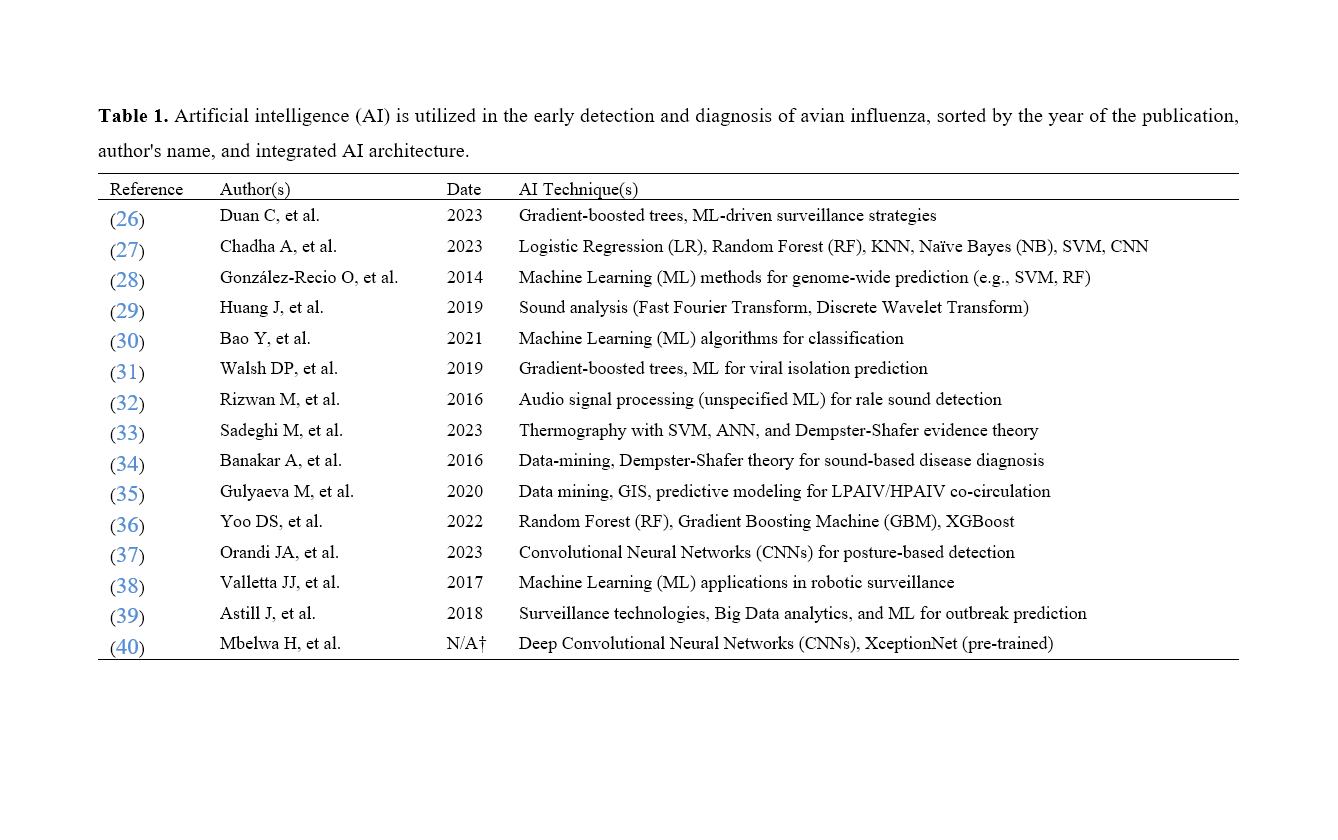
Downloads
Published
Issue
Section
License
Copyright (c) 2024 Hesameddin Akbarein (Corresponding Author); Amir Nikoukar, Matin Sotoudehnejad, Omid Nekouei (Author)

This work is licensed under a Creative Commons Attribution-NonCommercial 4.0 International License.


